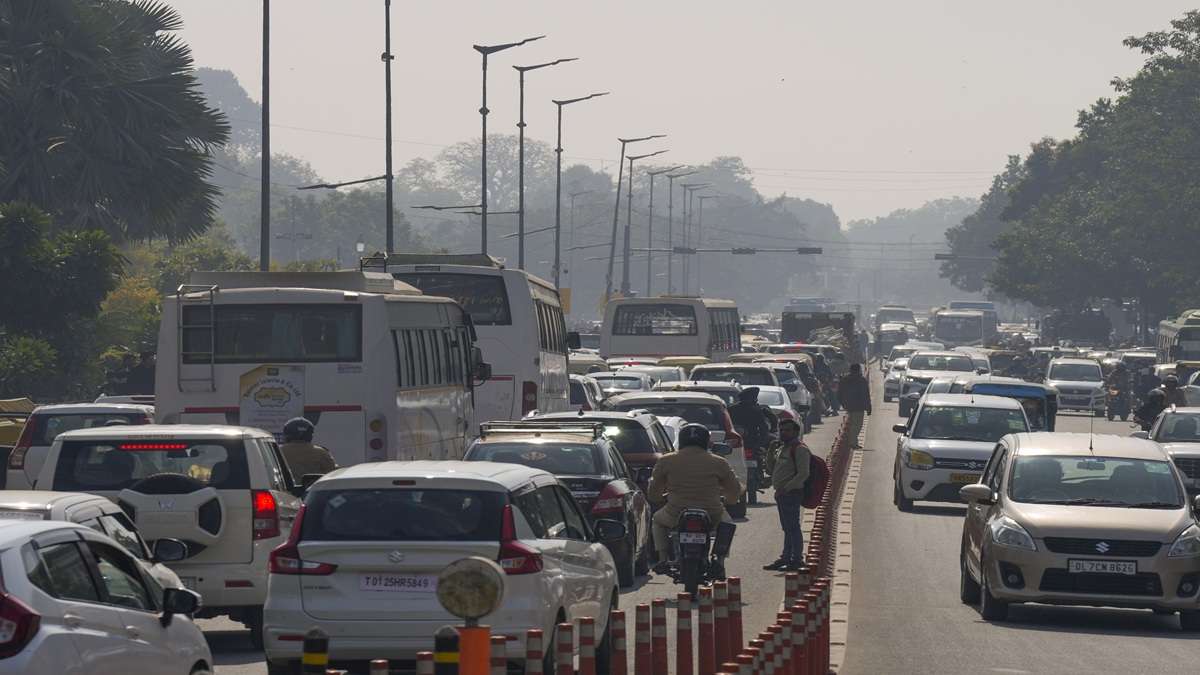 |
|
The full dress rehearsal for India's Republic Day parade on January 23rd, 2025, resulted in widespread traffic congestion in central Delhi, causing significant inconvenience for commuters. The areas most severely impacted were around India Gate and ITO, two major intersections and landmarks in the city. Reports from commuters described gridlock on Ring Road, particularly near the ITO loop and IP Extension. One commuter recounted having to make a U-turn near the IP Extension metro station due to the impassable traffic on Vikas Marg. The slow-moving traffic extended to other areas, with vehicles crawling near the Shivaji Stadium metro station, close to Connaught Place. This widespread disruption underscored the significant impact of large-scale events on the city's already congested road network.
The traffic congestion was not limited to the immediate vicinity of the parade route. A resident of Noida, Sneha Rai, reported substantial delays at the Delhi-Noida border due to heightened security checks. Further compounding the problem, she noted heavy traffic at Ashram Chowk and Ring Road. The closure of roads near the C-Hexagon at India Gate, necessitating diversions, further contributed to the extensive queues and delays experienced by motorists. This highlights the ripple effect of major road closures, impacting even areas seemingly distant from the event's central location. The cumulative effect of these various choke points created a city-wide traffic crisis.
The parade rehearsal, which commenced at 10:30 am on Thursday, January 23rd, began at Vijay Chowk and proceeded towards the Red Fort. To ensure the smooth conduct of the parade, extensive traffic management measures were implemented. These included significant traffic restrictions and diversions that were in place from January 22nd and 23rd. Kartavyapath, a key thoroughfare, was closed to traffic from Vijay Chowk to India Gate from 6 pm on January 22nd until the parade concluded. Cross traffic was prohibited on Rafi Marg, Janpath, and Man Singh Road from 11 pm onward. The comprehensive nature of these restrictions indicates the significant logistical planning required for such a large-scale event.
To further facilitate the parade's smooth execution and ensure public safety, all types of commercial vehicles (light, medium, and heavy) were barred from entering Delhi from 10 pm on January 22nd to 1:30 pm on January 23rd. Specific road closures were also enforced, including the C-Hexagon-India Gate area from 9:15 am on January 23rd. Traffic flow was restricted on Tilak Marg, BSZ Marg, and Subhash Marg from 10:30 am onwards. These measures, while necessary for security and the event's success, directly contributed to the significant traffic disruptions experienced by commuters. The authorities advised commuters to avoid the parade route between 9:30 am and 1:00 pm and to utilize alternative transportation options.
The impact of the traffic restrictions extended beyond private vehicles. Delhi City Bus Services experienced curtailment at several locations, including Park Street/UdyanMarg, Aram Bagh Road, R/A Kamla Market, Pragati Maidan, Mori Gate, Delhi Sachivalaya, Hanuman Mandir, ISBT Kashmiri Gate, ISBT Sarai Kale Khan, and Tis Hazari Court. Inter-state buses were also diverted, with adjustments made to routes originating from Ghaziabad and Dhaula Kuan. These changes affected numerous commuters relying on public transportation, adding to the overall disruption. The extensive nature of the traffic management plan, while designed to ensure a successful parade, resulted in significant disruptions and inconvenience for a large portion of Delhi's population.
The traffic diversions extended to multiple entry points into Delhi, impacting commuters traveling from surrounding areas. These diversions were implemented at various borders, including Tikri, Jharoda, Dhansa, Daraula, Jhatikra, Nanakhedi/Badusaria, and Surakhpur. Further diversions were put into effect in Bahadurgarh, Haryana, and Gurugram, Haryana, redirecting traffic to alternative routes. These additional measures highlight the broad scope of the traffic management plan and the considerable area affected by the Republic Day parade rehearsal. The comprehensive nature of the plan emphasizes the significant logistical challenges involved in managing traffic during such a large-scale event.
In addition to ground-level traffic management, restrictions were also placed on airspace. The flying of sub-conventional aerial platforms, including paragliders, paramotors, hang gliders, UAVs, UASs, microlight aircraft, remotely piloted aircraft, hot air balloons, small-size powered aircraft, quadcopters, and para-jumping from aircraft, was prohibited over the National Capital Territory of Delhi until February 15th. This comprehensive approach to security management demonstrates the government's commitment to ensuring the safe and successful completion of the Republic Day celebrations. The combination of ground and air restrictions resulted in a significant alteration of the city's usual transportation dynamics for an extended period.
